| |
Home
Famous and Fascinating Women in History
Frontiersmen and Women
The World's Greatest Composers
Famous Women Spies
Great Authors of the World
Generals and other Noteworthy People
from the Civil War
The Presidents of the United States
The First Ladies of the United States
Homes and Monuments of and to
Famous People
Historical People and Events by Month for Each Day of the Year!
Famous Figures in Black History
The Calvert Family and the Lords Baltimore
Understanding the American Revolution and its People
Everything Beatles!
Everything Maryland! |
| |
|
 
|
 |  | 
Andrew Jackson
and The Hermitage
By John T. Marck
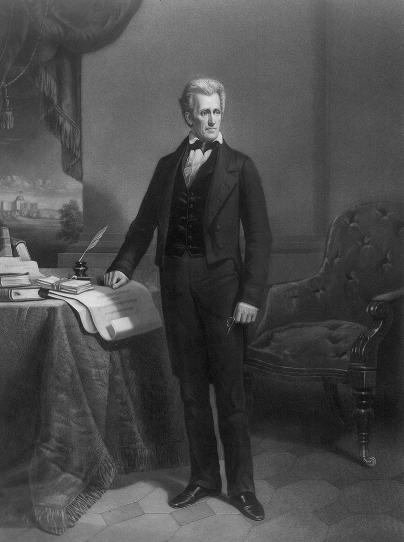
When we think of The Hermitage
today, we refer to Andrew Jackson and his mansion house.
However, in his day The Hermitage was more than just his house, but
his entire farm, and a refuge from the hectic trails of public life.
Before Jackson purchased The
Hermitage, it was owned by Nathaniel Hays, who in 1780 laid claim to a
640-acre land grant that consisted mostly of land with thick forests
but also rich soil that was served by natural springs. The Cumberland
and Stone’s Rivers, were only over a mile away, on land that
eventually became The Hermitage.
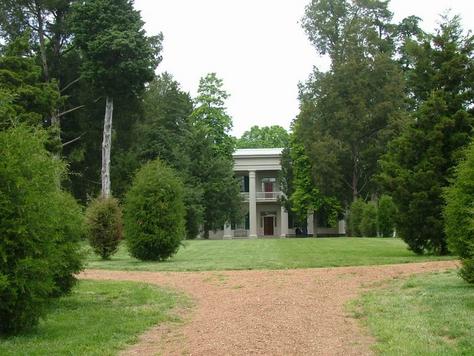
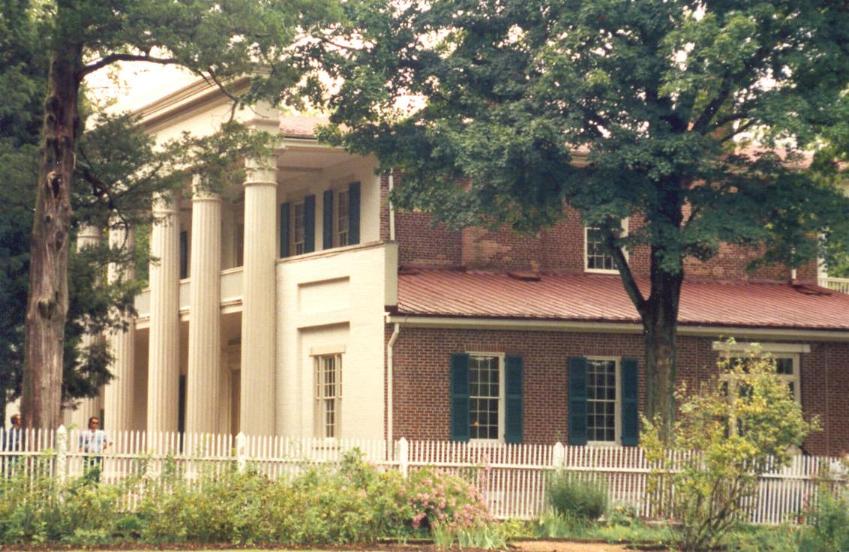
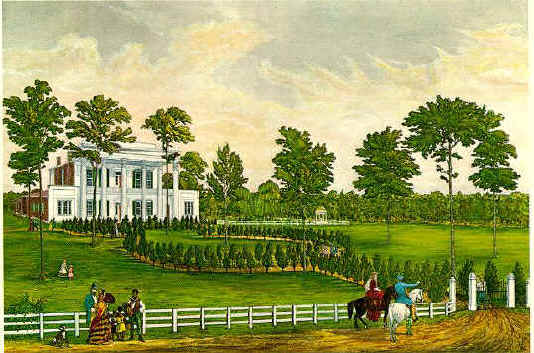
Southern Artist George B.
Kirchner redrew this print from the antique F. W. Strickland print of
the home of Andrew and Rachel Jackson. A scene typical of the time
when Jackson lived here.
During this time the Indian Wars
caused many a settler to flee the region, including Hays, who returned
to East Tennessee in 1783. By 1798, the Indian Wars ended, so Hays and
his wife Elizabeth, their two children and two slaves, settled this
land in Davidson County. For the next two years, Hays supervised
the construction of a two-story log farmhouse near what was known as
“Gravelly Spring.” This farm adjoined Andrew Jackson’s Hunter Hill
plantation.
Hays cleared the fields and
bartered the cotton he grew at Jackson’s Hunter’s Hill General Store,
where he had an account. Besides dealing with each other in a
professional and social manner, Jackson and Hays also shared an
interest and love of the military, as Hays was a leader in the
Tennessee State Militia. On July 5, 1804, Hays moved to Bedford County
and thus sold his farm to Jackson for $3,400.00. Jackson then
sold his more valuable farm at Hunter’s Hill to pay off debts. Almost
immediately thereafter, Jackson hired a Nashville craftsman to
refurbish the farmhouse interior, using French wallpaper and painted
trim. Andrew then hired additional men to clear the fields and build
fences. In August, Andrew and his wife Rachel moved to their new
home, which Jackson called “Rural Retreat,” before quickly renaming
it, The Hermitage.
When Andrew Jackson and Rachel
Donelson Robards (below) met in 1788 at her mother’s Nashville home,
he was a young lawyer and she a married woman - - although estranged
from her husband, Lewis Robards. In 1791, upon Jackson learning
that Robards had divorced Rachel, he hastened to marry her and did so
on August 1, in Natchez, Mississippi. Three years later, having
learned that the divorce had only recently been granted, they married
again. These circumstances did not disturb their respectable
status in Nashville, but when Jackson ran for the presidency in 1828,
his political enemies branded Rachel an adulteress.
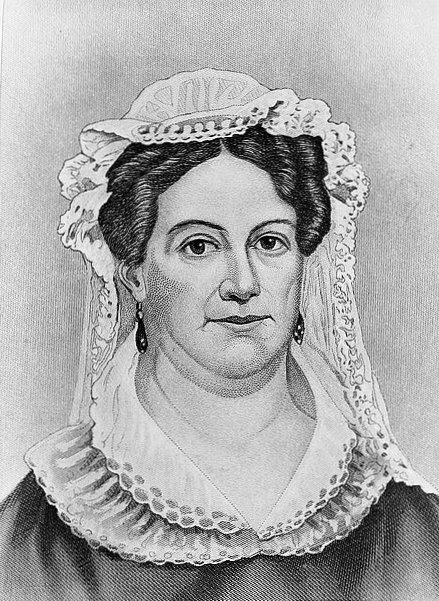
Now at The Hermitage, Jackson hired
two men to construct a new kitchen outbuilding, which served as slave
quarters for Betty, their cook and her family.
Originally Jackson operated his
cotton farm with nine African-American slaves, but this number soon
grew to 44 slaves by 1820. In a short time, Jackson converted
the farm into a 1,000-acre plantation and supervised the construction
of many outbuildings, including the distillery, dairy, carriage house,
cotton gin and press, and slave cabins.
As a general rule, Jackson used
about two-hundred-acres for cotton as a cash crop, and the remainder
of the farm dedicated to food and vegetables for his family, their
slaves, and livestock. Another part of The Hermitage was used for
Jackson’s true passion, that of raising racehorses.
Andrew and Rachel lived in the log
farmhouse until the winter of 1820-1821. For two years, between
1819 and 1821, Jackson had built a Federal-style, two-story house.
Concurrent with the building of the house, Jackson also hired William
Frost, who designed a formal garden for Rachel.
Upon the completion of the new
mansion house, it also featured two new outbuildings; a smokehouse and
a kitchen. For the interior walls of the main stair hall, Rachel
chose scenic wallpaper from France that depicted Greek mythology.
When the brick production on the mansion house began, Jackson had new
brick slave-houses built. By the 1820s, many brick and log cabins
dotted the landscape of The Hermitage that housed 95 slaves.
When Andrew Jackson took office on March 4, 1829 as the seventh
President of the United States, his adopted son, Andrew, Jr., and some
of his Nashville friends, looked after the affairs of The Hermitage
that included a series of overseers that managed the day-to-day
operations.

Hermitage Dining Room
In 1831, while in Washington,
President Jackson hired a Nashville architect, David Morrison, to
enlarge the mansion house dramatically. This improvement
included flanking one-story wings, a two-story entrance portico with
Doric columns, a small rear portico, and copper gutters. The east wing
included a library and a farm office and the west wing consisted of a
large dining room and pantry. Jackson also commissioned Morrison
to build a Grecian Temple and monument tomb for Rachel, who had died
On December 22, 1828. A copper domed roof was completed in
1832.
On October 13, 1834, a chimney fire
seriously damaged the mansion. President Jackson hired Nashville
architects and master builders Joseph Reiff and William C. Hume to
rebuild the mansion into what would become a stately Greek
Revival-style monument. The repairs were completed in 1836 and one
year later Jackson, who had retired from the presidency, returned home
to The Hermitage.
On June 8, 1845, Andrew Jackson
died from consumption, dropsy, partly from old wounds, at the age of
78, and was laid to rest two days later under the tomb next to his
wife Rachel. At the time of his death, 161 slaves operated the
cotton plantation and lived in dozens of slave cabins scattered
throughout the 1,050-acre plantation that was The Hermitage.
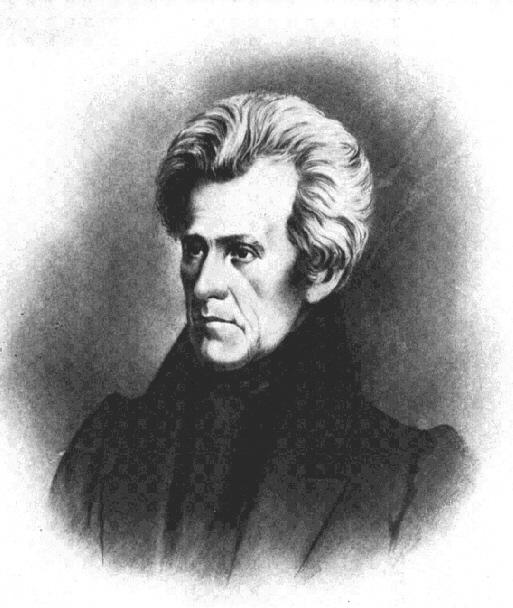
Upon Jackson’s death, his son,
Andrew, Jr. (1808-1865), inherited The Hermitage. Within one year he
began selling off small outlaying parcels of land. In time he
did make some improvements to the property, that of new carriage drive
gates and a new fence around the garden, but did little to maintain
the mansion house. He tried to expand his moneymaking efforts with an
iron works and lead mine in Kentucky, but these were unsuccessful.
With mounting debts, in 1853, he mortgaged The Hermitage plantation.
Efforts then began to save The
Hermitage. The first such venture occurred in the 1850s when on
January 1854, Congress rejected a plan to use The Hermitage as a
southern branch of the U.S. Military Academy at West Point. With
this and having no choice, Andrew Jr., in 1856, sold 500-acres and the
mansion house and outbuildings to the State of Tennessee for
$48,000.00. The intention of the States’ purchase was to use the
property for public use, such as for a school, but additional funding
was unavailable to accomplish this goal. Consequently, the State
allowed the Jackson family to remain there as tenants.
In 1857, Governor Andrew Johnson
proposed converting The Hermitage mansion into the executive mansion
for the governor. That same year, Andrew Jr., sold the remaining
550-acres to private buyers, and in 1858, the Jackson family moved out
to a cotton plantation in Mississippi, taking all but 5 of their
slaves with them. These five remained as caretakers and tenants.
Between the years 1859 and 1861,
several other ideas for the Hermitage were proposed by the State of
Tennessee, but none succeeded. In 1860 Governor Isham Harris was
the first to advocate the preservation of The Hermitage. The
idea was well received, but the outbreak of The Civil War prevented
such a project. So, with his Mississippi cotton plantation
having failed, Andrew Jr., and his family moved back to the Hermitage
as tenants, bringing a few of their salves with them. During the
Civil war, several important battles took place in and around
Nashville, but thankfully The Hermitage suffered no damage.
During the war, the Confederate States of America also had a proposal
for the property, that of converting the Hermitage into a Confederate
Military Academy. But this proposal, like the others, was never
implemented. Upon the end of the Civil War, and with the 13th
Amendment, all slaves were officially freed from The Hermitage.
In 1865, Andrew Jr., died, leaving
his widow, Sarah, as overseer to The Hermitage. With the end of the
Civil War, she and her son Andrew III operated a small farming
operation with paid labor and tenant farmers. Within a short
time, The Hermitage farm fell into disrepair and the many buildings
began a slow deterioration. Being right after the war, the
State of Tennessee did not have the funds for rebuilding its vital
infrastructure, let alone fund a state-owned historic site.
In 1865, Governor William Brownlow
ordered the repairs be made to Jackson’s tomb, as well as a survey of
the repairs needed for the entire property. Again, what to do
with The Hermitage? In 1866, this same governor made several
unsuccessful proposals including using it for invalid soldiers, but
this never came to pass. The next year, the Tennessee
Legislature authorized a public auction of the Hermitage, but this was
never acted upon.
In the 1870s and 1880s, Nashville
grew into a southern commercial center, and increasing numbers of
people came there, including the very wealthy. In 1883, the
State finally approved $350.00 to repair the tomb as well as build an
iron fence around it. Although this was accomplished, the State took
no other action until 1888, when they again proposed converting it
into a hospital for invalid Confederate soldiers. This idea brought
about a huge public outcry for preservation of the landmark which led
to the creation of the Tennessee organization of women, who became
chartered in 1889 as the Ladies’ Hermitage Association (LHA).
Through tireless efforts the LHA
managed to restore the mansion house and today they manage 1,120
acres, which includes the entire 1,050-acre tract that Andrew Jackson
owned when he died in 1845. Quite an accomplishment!!
Today, as you start your tour of
this wonderful historic landmark, you enter the Visitor’s Center that
houses a museum shop, a restaurant and a small but most impressive
museum. The museum contains original artifacts, memorabilia, his
uniform, sword, and graphic displays tracing Jackson’s career and the
history of The Hermitage. Also available is a screening of a
sixteen-minute film.
Upon exiting the theater, cassette
players and audiotapes are available to guide through the rest of your
tour. Stationed in the buildings are trained docents, who can answer
your question. As you enter the mansion, most impressive is the
panoramic wallpaper that spans the entire front hall.
Another item that is most popular
with visitors is the portrait of Rachel Jackson, that hangs over the
mantel in the President’s bedroom, and the history associated with it.
As mentioned earlier, Rachel died in 1828; only weeks after her
husband took office. This painting was shipped to Washington, where it
was placed, as it was at The Hermitage, opposite Jackson’s bed. As
Jackson once explained that it was placed so that, “it might be the
first object to meet his eyes when his lids opened in the morning and
the last for his gaze to leave when they closed in sleep at night.”
The grounds at The Hermitage are a
joy to see with their many colors, manicured and lush. The
walkway from the Visitor’s Center to the mansion house passes a
guitar-shaped driveway bordered by fabulous cedar trees that were
planed in 1838. To the east is “Rachel’s Garden,” which today
still remains an excellent example of a typical southern plantation
garden. More than one-acre in size, it is kept with the same
types of flowers that were available when Rachel used to gather them
to make her bouquets for the house or to give to her guests as they
departed on their way. There are more than 50 varieties of
flowers, shrubs, herbs, and trees throughout the grounds. At the
southeast corner of the garden is the Jackson tomb, a stone monument
built after Greek lines, with a copper dome supported by fluted
columns.
At the rear of the mansion house
are many outbuildings that include, a smokehouse, two original log
cabins, and a springhouse. Other areas featured that are a part of The
Hermitage include Tulip Grove, down Rachel’s Lane. This was the
residence of Andrew Jackson Donelson, Jackson’s secretary and Rachel’s
nephew. Nearby is the Old Hermitage Church, built on land
donated by Andrew Jackson in 1838, and where he attended services.
The Hermitage is a wonderful place
to visit, and a splendid time is guaranteed for all.
Quick
Biographical Facts
ANDREW JACKSON
7th President
Term- March 4,
1829 to March 4, 1837
Democratic Party
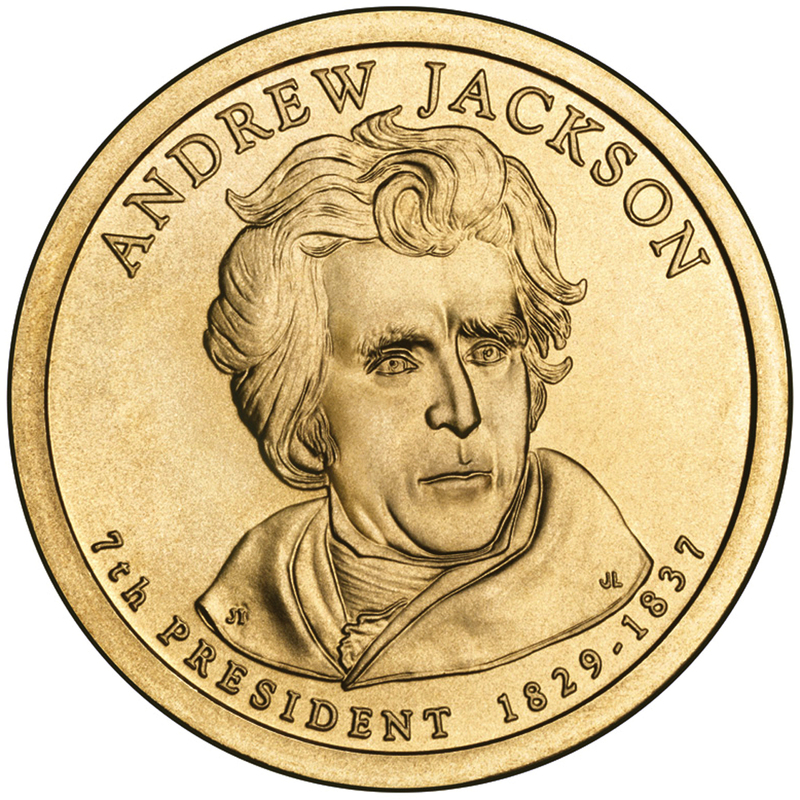
Birth:
"The Waxhaws", South Carolina, March 15, 1767.
Ancestry:
Scotch-Irish
Marriage:
Natchez, Mississippi, August 1, 1791 to Rachel Donelson Robards, who
was born in Halifax County, Virginia, June 15, 1767. Rachel died
in Nashville, Tennessee, December 22, 1828, and is buried at "The
Hermitage", Nashville, Tennessee.
Children:
Andrew Jackson, Jr., (adopted)(1808-1865)
Home:
"The Hermitage", Nashville, Tennessee.
Education:
Attended public school; studied law in Salisbury, South Carolina.
Religion:
Presbyterian
Occupation before Presidency:
Lawyer, soldier, politician.
Military Service:
Judge advocate of Davidson County Militia (1791); Major general of
Tennessee Militia (1802-1812); Major General of U.S. Army (1814-1821).
Pre-Presidential Offices:
Attorney General of Western District of North Carolina; Delegate to
Tennessee State Constitutional Convention; Member of U.S. House of
Representatives and Senate; Tennessee Supreme Court Judge; Governor of
Florida Territory.
Age at Inauguration:
61
First Administration:
Vice-President: John Calhoun of South Carolina (resigned 12/28/1832),
Inauguration March 4, 1829,
The Capitol, Washington D.C.
Second Administration:
Vice-President: Martin Van Buren of New York, Inauguration March 4,
1833, House of Representatives, Washington D.C.
Occupation after Presidency:
Retired
Death:
"The Hermitage," Nashville, Tennessee, June 8, 1845
Cause of Death:
Consumption, dropsy, partly from old wounds, at age 78.
Place of Burial:
"The Hermitage," Nashville, Tennessee.
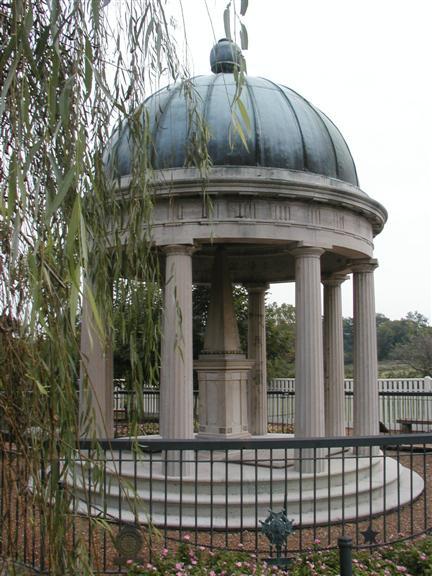

Interesting Facts:
Jackson was the first of seven
presidents to be born in a log cabin.
Jackson had a scar on his forehead
that he received when he was thirteen-years-old. He received it when
he was struck with a sword by a British officer when Jackson refused
to clean the officer’s boots.
Jackson was the only President in
American history to pay off the national debt and leave office with
the country in the black.
The first assassination attempt on
a sitting U.S. President occurred on January 30, 1835 when Robert
Lawrence failed to slay Jackson.
Jackson was the first U.S.
President to be censured by the U.S. Senate. The censure was expunged
in the last year of his presidency.
Jackson helped found and was the
first U.S. President to represent the Democratic Party.
Jackson was the first person to
serve as a U.S. Representative, Senator and President.
Jackson was the first Governor of
Florida.
Jackson was the first President
from a state west of the Appalachian Mountains.
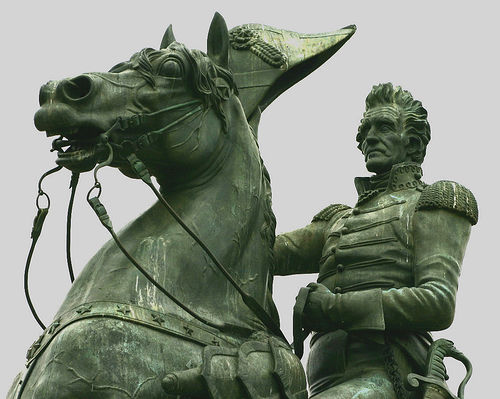
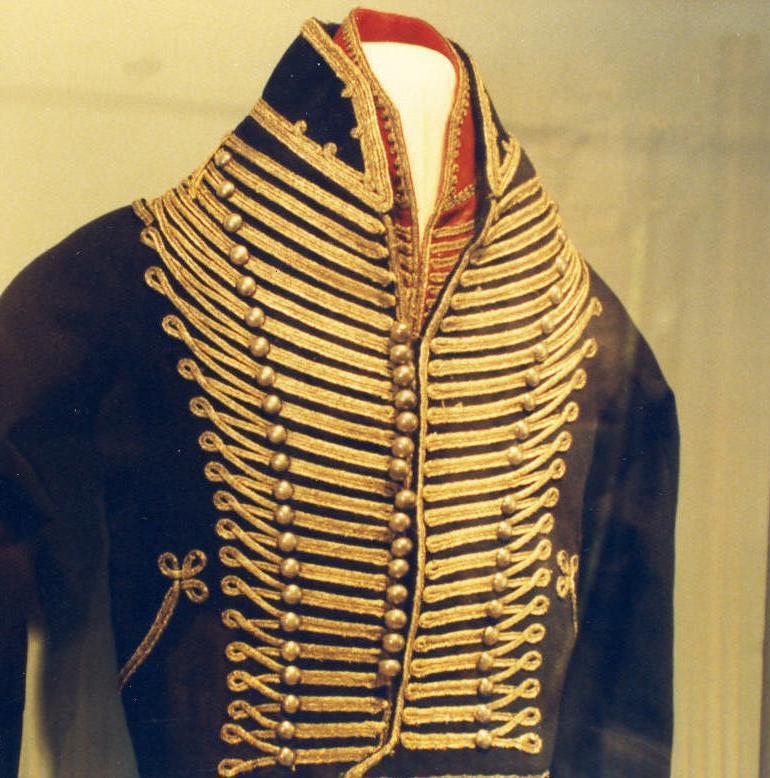
Andrew Jackson's actual uniform he
wore, on display at the Hermitage.
Copyright
© 1993-2022 by John T. Marck. Grateful thanks and appreciation is granted
to The Hermitage Historic Site and the Ladies’ Hermitage Association
for their informational assistance. Information in part from
Homes and Libraries of The Presidents, By William G. Clotworthy,
McDonald & Woodward Publishing Company, Blacksburg, Virginia, 1995.
Biographical facts from The Presidents of the United States, By
John T. Marck.
A
Splendid Time Is Guaranteed For All
| | |
| |

